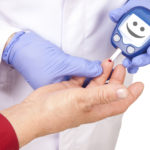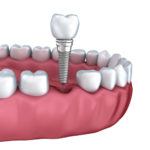Table of Contents
Pain in the face and mouth regions (orofacial pain) can have odontogenic (caused by the tooth) and nonodontogenic origin. Also this pain could be acute or chronic nature. Unlike chronic pain (long-lasting pain that lasts longer than three months and has no physiological justification), acute pain is short-lived and lasts for a limited time, for a few seconds, minutes, hours, days and sometimes weeks. Acute pain is considered as a physiological warning of body trauma and occurs after tissue damage (mechanical, chemical, thermal, etc.) as a result of activation of nociceptors (pain receptors) in the defect site. This type of pain is usually associated with injuries, fractures and surgical procedures (for example implant placement) and it is one of the most common reasons for doctor or dentist visits.
Depending on the diagnosis and the cause of orofacial pain, the dentist may recommend taking painkillers. Analgesics are painkillers and can be effectively used in tooth pain relief. The name analgesic comes from the Greek words an (“no”) and algos (“pain”) which means the absence of pain. Analgesics act in different ways on the peripheral and central nervous system. According to the mechanism of action analgesics are divided into non-opioid (non-narcotic) and opioid (narcotic) analgesics. The basic difference between the opioid and non-opioid analgesics is that the latter do not develop addiction, side effects are much less common and the toxicity is lower. According to the literature data, in the US dentists prescribe more than 16 million prescriptions for painkillers during one year.
Pain treatment should begin with analgesics that have weaker activity and then gradually introduce more stronger analgesics.
According to the World Health Organization, analgesics are divided into:
- non-opioid (simple) analgesics – such as metamizole, paracetamol, acetylsalicylic acid, nonsteroidal antiinflammatory drugs (NSAID),
- weak opioids – such as codeine, morphine (10 mg), tramadol,
- strong opioids – such as morphine, methadone.
Analgesics can be combined between the groups (eg. acetaminophen or ibuprofen with tramadol), but the use of two or more drugs from the same group at the same time is not desirable because of increased risk of side effects. It is best to take analgesics regularly, in regular (prescription) intervals, even though currently there is no pain. In fact, if you take analgesics only when pain is expressed, it would be necessary to apply a higher dose of the drug to accomplish the same effect.
Non-opioid (non-narcotic) analgesics
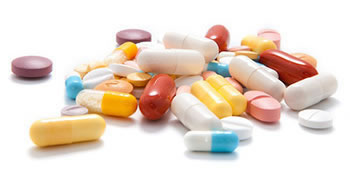 Non-opioid analgesics have an analgesic (reduce pain), antipyretic (lower fever) and anti-inflammatory effect. Among them, paracetamol has only antipyretic and analgesic effect. These analgesics act by inhibiting the synthesis of inflammatory mediators and prostaglandins via the cyclooxygenase enzyme activity. Antipyretic, analgesic and anti-inflammatory effects are mainly achieved by inhibition of cyclooxygenase-2 (COX-2) enzyme, while the inhibition of cyclooxygenase-1 (COX-1) is associated with an increased incidence of side effects. Non-opioid analgesics are usually used in treatment of mild to moderate pain and often in acute postoperative pain. Non-opioid analgesics which have antipyretic and analgesic effects (analgesics-antipyretics) eliminate the pain without impairing consciousness.
Non-opioid analgesics have an analgesic (reduce pain), antipyretic (lower fever) and anti-inflammatory effect. Among them, paracetamol has only antipyretic and analgesic effect. These analgesics act by inhibiting the synthesis of inflammatory mediators and prostaglandins via the cyclooxygenase enzyme activity. Antipyretic, analgesic and anti-inflammatory effects are mainly achieved by inhibition of cyclooxygenase-2 (COX-2) enzyme, while the inhibition of cyclooxygenase-1 (COX-1) is associated with an increased incidence of side effects. Non-opioid analgesics are usually used in treatment of mild to moderate pain and often in acute postoperative pain. Non-opioid analgesics which have antipyretic and analgesic effects (analgesics-antipyretics) eliminate the pain without impairing consciousness.
According to the pharmacological composition, analgesics-antipyretics are divided into:
- salicylic acid derivatives (aspirin),
- pyrazolone derivatives (aminophenazone, propyphenazone, metamizol),
- para-aminophenol derivatives (phenacetin, acetaminophen),
- indole derivatives (indomethacin, sulindac),
- propionic acid derivatives (ibuprofen, ketoprofen, naproxen),
- aminophenylacetic acid derivatives (diclofenac),
- oxicams (piroxicam, tenoxicam),
- fenamates (mefenamic acid).
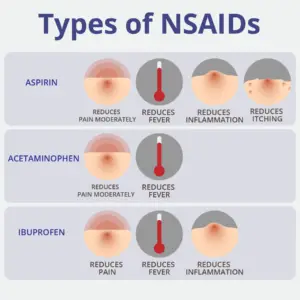 Non-steroidal anti-inflammatory drugs (NSAID analgesics) in lower doses have only an analgesic and antipyretic effects, while higher doses show anti-inflammatory activity. As such, they are effective in reducing pain and symptom relief in case of fever and inflammation. The name “non-steroidal” is used for their distinction of glucocorticoids (steroids), which also have similar anti-inflammatory effects, but also affect the mental state of the patient. NSAIDs do not have narcotic features. The best-known drugs from this group are salicylic acid derivative (aspirin) and propionic acid derivatives (ibuprofen and naproxen). They are available in sale over the counter without a prescription. Unlike non-steroidal anti-inflammatory drugs, paracetamol (acetaminophen) has a very slight anti-inflammatory activity and therefore is not considered to be a non-steroidal anti-inflammatory drug.
Non-steroidal anti-inflammatory drugs (NSAID analgesics) in lower doses have only an analgesic and antipyretic effects, while higher doses show anti-inflammatory activity. As such, they are effective in reducing pain and symptom relief in case of fever and inflammation. The name “non-steroidal” is used for their distinction of glucocorticoids (steroids), which also have similar anti-inflammatory effects, but also affect the mental state of the patient. NSAIDs do not have narcotic features. The best-known drugs from this group are salicylic acid derivative (aspirin) and propionic acid derivatives (ibuprofen and naproxen). They are available in sale over the counter without a prescription. Unlike non-steroidal anti-inflammatory drugs, paracetamol (acetaminophen) has a very slight anti-inflammatory activity and therefore is not considered to be a non-steroidal anti-inflammatory drug.
Non-opioid analgesics can remove most of the pain of dental origin, from mild to severe pain. Dentists often recommend their use, mostly aspirin, paracetamol and ibuprofen. Usually they are applied in the form of tablets or capsules and by oral route of administration (by mouth). The most common side effects of these types of drugs are gastrointestinal problems, nausea and constipation, and as less often side effects may occur headaches, itching and dizziness.
Salicylates and acetylsalicylic acid
 Salicylates are derivatives of salicylic acid, and acetylsalicylic acid (aspirin) is their most famous representative. Salicylates are inhibitors of prostaglandin synthesis and induce analgesia (pain relief) by reducing the sensitivity of pain receptors. In addition, they have antipyretic effect (lower fever). Specifically, the synthesis of prostaglandins in the hypothalamus stimulates increased levels of endogenous pyrogenic substances in the blood, as a result of inflammation (eg. bacterial endotoxins). Increased amounts of prostaglandin effect on the center for thermoregulation by adjusting it to maintain higher temperature than normal. The inhibition of prostaglandin synthesis in the hypothalamus results in restoring the center of thermoregulation to maintain normal body temperature, although pyrogenic substances may still be present. Also, increased body temperature can be lowered by vasodilation of peripheral blood vessels in the skin and by increased perspiration (sweating). In case of normal body temperature salicylates do take effect in organism. Salicylate anti-inflammatory activity is also a consequence of the inhibition of prostaglandin synthesis. Prostaglandins are potent vasodilators and increase the permeability of capillaries. Therefore, salicylates affect the reduction of redness and swelling in the inflammatory area. Salicylates prolong bleeding time by acetylation of cyclooxygenase enzyme in platelets and by inhibiting the synthesis of thromboxane. Because of this effect, it is very important not to take salicylates before and after some dental interventions, in previous consultation with the dentist.
Salicylates are derivatives of salicylic acid, and acetylsalicylic acid (aspirin) is their most famous representative. Salicylates are inhibitors of prostaglandin synthesis and induce analgesia (pain relief) by reducing the sensitivity of pain receptors. In addition, they have antipyretic effect (lower fever). Specifically, the synthesis of prostaglandins in the hypothalamus stimulates increased levels of endogenous pyrogenic substances in the blood, as a result of inflammation (eg. bacterial endotoxins). Increased amounts of prostaglandin effect on the center for thermoregulation by adjusting it to maintain higher temperature than normal. The inhibition of prostaglandin synthesis in the hypothalamus results in restoring the center of thermoregulation to maintain normal body temperature, although pyrogenic substances may still be present. Also, increased body temperature can be lowered by vasodilation of peripheral blood vessels in the skin and by increased perspiration (sweating). In case of normal body temperature salicylates do take effect in organism. Salicylate anti-inflammatory activity is also a consequence of the inhibition of prostaglandin synthesis. Prostaglandins are potent vasodilators and increase the permeability of capillaries. Therefore, salicylates affect the reduction of redness and swelling in the inflammatory area. Salicylates prolong bleeding time by acetylation of cyclooxygenase enzyme in platelets and by inhibiting the synthesis of thromboxane. Because of this effect, it is very important not to take salicylates before and after some dental interventions, in previous consultation with the dentist.
Salicylates stimulate the gastric mucosa, causing dyspepsia, burning sensations, nausea and vomiting. Salicylates can cause allergic reactions, especially in patients with bronchial asthma. Allergy symptoms can vary from mild urticaria to the bronchospasm with fatal anaphylaxis. Breastfeeding mothers, pregnant women in the last three months of pregnancy and children under the age of 12 years should not use salicylates.
Salicylates can interact with a variety of drugs. They should not be used with oral anticoagulants because it may lead to serious gastrointestinal bleeding. Applying with oral antidiabetics can increase hypoglycemia.
Acetylsalicylic acid can be used in different doses as an analgesic when the pain is mild and medium strong. Also they can be used as an antipyretic in febrile condition, as an antiinflammatory agent for the treatment of rheumatic fever, arthritis and in the prevention of coronary artery disease and cerebrovascular disease. The analgesic and antipyretic dose for adult is from 325 to1000 mg of (0.3 to 0.9 g) every 4 to 6 hours. These doses are considered to be low, but even then it is necessary to interrupt therapy ahead of dental procedures to reduce bleeding after therapy (in previous consultation with dentist and physician). The maximum daily dose is 4 grams. Acetylsalicylic acid is rapidly absorbed after oral administration and the maximum blood concentration is reached in two hours. Drugs based on acetylsalicylic acid should be administered 1 hour before or 2 to 3 hours after a meal in order not to slow down the resorption and weaken the effect of the drug. Taking the drug on an empty stomach is not recommended, and with each taking the drug patients should drink a glass of water.
Cyclooxygenase-2 inhibitors (coxibs)
Cyclooxygenase-2 inhibitors are a relatively new group of non-steroidal anti-inflammatory drugs which specifically inhibit only the activity of cyclooxygenase-2. The inhibition of cyclooxygenase-2 makes these drugs suitable for the alleviation of pain in patients with peptic ulcers and gastrointestinal bleeding. Although clinical trials confirmed the efficacy of these drugs, an opinion on the superiority in comparison with other non-steroidal anti-inflammatory drugs is not unique between physicians and dentists. In addition, due to their slightly higher price, patients are less willing to buy them. Representatives of these drugs are celecoxib and rofecoxib. The recommended dose for pain relief after dental procedure is 200 mg once a day for celecoxib (maximum daily dose 400 mg) and 50 mg once a day for rofecoxib (maximum daily dose of 50 mg, up to 5 days in a row).
Pyrazolone derivatives
These are effective analgesics and antipyretics, which are, due to a number of side effects, less and less used. To this group belong phenazone (no longer used), propyphenazone, aminophenazone and metamizole. Propyphenazone is used in combinations with other analgesics-antipyretics.
Para-aminophenol derivatives
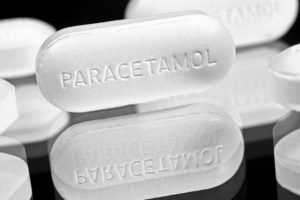 These are effective analgesics and antipyretics, which can be used instead of acetylsalicylic acid. They have weaker anti-inflammatory activity than other analgesics-antipyretics. To this group belong phenacetin and acetaminophen (paracetamol). They are applied orally and less stimulate gastric mucosa than aspirin. Possible side effects include methemoglobinemia, hepatotoxicity, nephrotoxicity and hemolytic anemia.
These are effective analgesics and antipyretics, which can be used instead of acetylsalicylic acid. They have weaker anti-inflammatory activity than other analgesics-antipyretics. To this group belong phenacetin and acetaminophen (paracetamol). They are applied orally and less stimulate gastric mucosa than aspirin. Possible side effects include methemoglobinemia, hepatotoxicity, nephrotoxicity and hemolytic anemia.
Phenacetin is applied only in combination with other analgesic drugs. Acetaminophen is used as an analgesic-antipyretic in patients in whom it can not be applied acetylsalicylic acid. Acetaminophen is especially useful for the treatment of mild to moderate pain, and its analgesic activity starts by taking dosage of 300 mg, while it works best after taking 1000 mg which is recommended dosage for the treatment of acute postoperative pain. The dose for adults is from 500 to 1000 mg every 4 to 6 hours, and the maximum daily dose is 4 grams. Paracetamol should be administered 1 hour before or 2 to 3 hours after meal. It should not be taken with alcohol as it may cause harmful effects on the liver.
Propionic acid derivatives
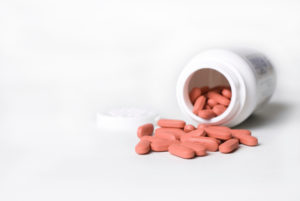 The best known representatives of propionic acid derivatives which may be used in dentistry are ibuprofen, ketoprofen and naproxen. They belong to the group of nonsteroidal anti-inflammatory drugs and are used to treat mild to moderate pain and inflammation. All three drugs have anti-inflammatory, analgesic and antipyretic activity and, depending on the dose, can be bought without a prescription. They non-selectively block the enzyme cyclooxygenase in the arachidonic acid cycle, thus preventing the synthesis of prostaglandins. The most common side effects are renal and gastrointestinal problems. These drugs are contraindicated in patients with active ulcer, hypersensitivity to the drug or one of its ingredients, and in people with asthma and diseases of the blood clotting. Also, they are not suitable neither for nursing mothers nor in the third trimester of pregnancy.
The best known representatives of propionic acid derivatives which may be used in dentistry are ibuprofen, ketoprofen and naproxen. They belong to the group of nonsteroidal anti-inflammatory drugs and are used to treat mild to moderate pain and inflammation. All three drugs have anti-inflammatory, analgesic and antipyretic activity and, depending on the dose, can be bought without a prescription. They non-selectively block the enzyme cyclooxygenase in the arachidonic acid cycle, thus preventing the synthesis of prostaglandins. The most common side effects are renal and gastrointestinal problems. These drugs are contraindicated in patients with active ulcer, hypersensitivity to the drug or one of its ingredients, and in people with asthma and diseases of the blood clotting. Also, they are not suitable neither for nursing mothers nor in the third trimester of pregnancy.
Dosage of ibuprofen which has analgesic effect is 200 to 400 mg every 4 to 6 hours, and a maximum daily dose is 2400 mg taken by mouth (oral application). The maximum daily dose for its anti inflammatory effect is 3200 mg. Ibuprofen relieves toothache and pain after dental procedures and is also recommended for pain relief in region of temporomandibular joint (400 mg orally every 6-8 hours), toothache (400 mg orally every 6-8 hours) and pain after surgery and tooth extraction (600 mg orally every 6 hours). Clinical studies have shown that ibuprofen causes the least side effects than other drugs in this group. Aphthous stomatitis is one of the side effects characteristic for ibuprofen. Ibuprofen can be found on the market under the same trade name.
Orally applied analgesic dose of ketoprofen is from 25 to 50 mg and can be administered every 6 to 8 hours, while the maximum daily dose is 300 mg.
Orally applied analgesic dosage of naproxen is from 250 to 275 mg, with administration every 6 to 8 hours. The maximum daily dose is 1,375 mg.
Aminophenylacetic acid derivatives
Aminophenylacetic acid derivatives and propionic acid derivatives also belong to the group of non-steroid antirheumatic drugs. The most commonly route of administration is by mouth. They are effective for mild to moderate pain of various origins including toothache. It is known that these drugs stimulate the digestive system and are contraindicated in peptic ulcer disease. The most famous representatives are diclofenac and indomethacin. The recommended dose for diclofenac-sodium are from 75 to150 mg per day (divided into 2 to 3 single doses), and the maximum daily dose is 200 mg. The daily dosage for diclofenac-potassium is from 50 to 200 mg (divided into 2 to 4 single doses). Indomethacin can be taken once a day with the dose of 25 mg or maximally 150 mg in 2 to 3 single doses.
Opioid (narcotic) analgesics

Opioid analgesics can only be used by a physician or dentist recommendation. In dentistry, they are often used in combination with another analgesic. Opioid analgesics induce painless, strong respiratory depression, sedation, vomiting, constipation and develop an addiction. They are divided into:
- opium alkaloids with morphine as the main representative and
- synthetic morphine derivatives.
Opium is the dried milk juice of immature white poppy heads. 25 different alkaloids can be obtained from opium, and they are divided into phenanthrene derivatives and isoquinoline derivatives. Phenanthrene derivatives are morphine, codeine and thebaine. They are depressants of central nervous system and have selective effect on pain. Isoquinoline derivatives are papaverine, narcotine and narceine. They do not act as analgesics, but they are good spasmolytics (relieve spasm of smooth muscles).
Opioid analgesics act as agonists to the so called opioid receptors in the central nervous system (they bind to these receptors). There are four categories of opioid receptors: mu (μ), kappa (κ), sigma (σ) and delta (δ). Stimulation of mu receptors leads to supraspinal analgesia, respiratory depression, euphoria and drug abuse. Stimulation of kappa receptors causes spinal analgesia, miosis and sedation. Stimulation of sigma receptors leads to dysphoria, hallucinations, respiratory and vasomotor stimulation. Delta receptors are responsible for the changes in affective behavior. Endogenous substances (naturally present in organism) that stimulate opiate receptors are enkephalins, dynorphins and endorphins. It is believed that endogenous opioids, probably like neurotransmitters, control the occurrence of pain.
Morphine
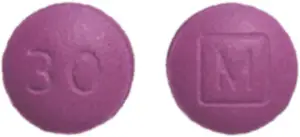 Morphine is a phenanthrene alkaloid of opium. It is partially resorbed after oral administration and well upon parenteral route of administration (non-oral mean of administration, the common parenteral routes are intramuscular, subcutaneous and intravenous). Most of morphine is excreted in the urine and a small part by the gastric mucosa. It acts as an agonist to mu and kappa receptors and provides good analgesic effect. Morphine also causes a certain degree of sedation. In most patients, after the disappearance of pain appears euphoria. Morphine has the following effects:
Morphine is a phenanthrene alkaloid of opium. It is partially resorbed after oral administration and well upon parenteral route of administration (non-oral mean of administration, the common parenteral routes are intramuscular, subcutaneous and intravenous). Most of morphine is excreted in the urine and a small part by the gastric mucosa. It acts as an agonist to mu and kappa receptors and provides good analgesic effect. Morphine also causes a certain degree of sedation. In most patients, after the disappearance of pain appears euphoria. Morphine has the following effects:
- strongly depresses the respiratory center in medulla oblongata
- causes nausea and vomiting
- depresses the cough center and provides antitussive effect (prevents or relieves cough)
- causes constipation
- causes urinary retention
- causes vasodilation of blood vessels in the skin which can cause orthostatic hypotension
- causes constriction of the pupils (miosis)
- is very addictive.
Codeine
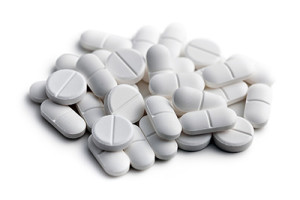 Codeine is a methyl ether of morphine. It is well absorbed after oral administration from the gastrointestinal tract and excreted in the urine. Codeine has weaker analgesic effect than morphine, but has very good antitussive effect. Unlike morphine, it does not paralyze the ciliary epithelium of the respiratory organs and does not lead to a halt of bronchial secretions. It does not cause addiction. Side effects of taking codeine may be nausea, vomiting and constipation.
Codeine is a methyl ether of morphine. It is well absorbed after oral administration from the gastrointestinal tract and excreted in the urine. Codeine has weaker analgesic effect than morphine, but has very good antitussive effect. Unlike morphine, it does not paralyze the ciliary epithelium of the respiratory organs and does not lead to a halt of bronchial secretions. It does not cause addiction. Side effects of taking codeine may be nausea, vomiting and constipation.
Synthetic analgesics
Synthetic analgesics have good analgesic properties and are divided into meperidine and methadone.
Meperidine is weaker analgesic than morphine, but it often serves as its substitute because meperidine has fewer side effects.
Methadone is a painkiller stronger than morphine. It has strong sedative effect and causes euphoria. Respiratory depression is weaker than with morphine.
Conclusion
The use of analgesics in modern dentistry is absolutely inevitable. On today’s market, there are numerous of drugs for removal and mitigation of pain that can occur before, during and after dental procedures. Although it is important to eliminate the cause of pain (to provide etiological treatment of a disorder that caused pain), also by proper selection and timely administering the analgesic to the patient it is possible to completely eliminate the pain or reduce its intensity to acceptable levels which do not interfere with patient’s daily life activities. Given that patients take numerous of other medications, it is especially important for dentist to pay attention to possible interactions of analgesics with different drugs.




